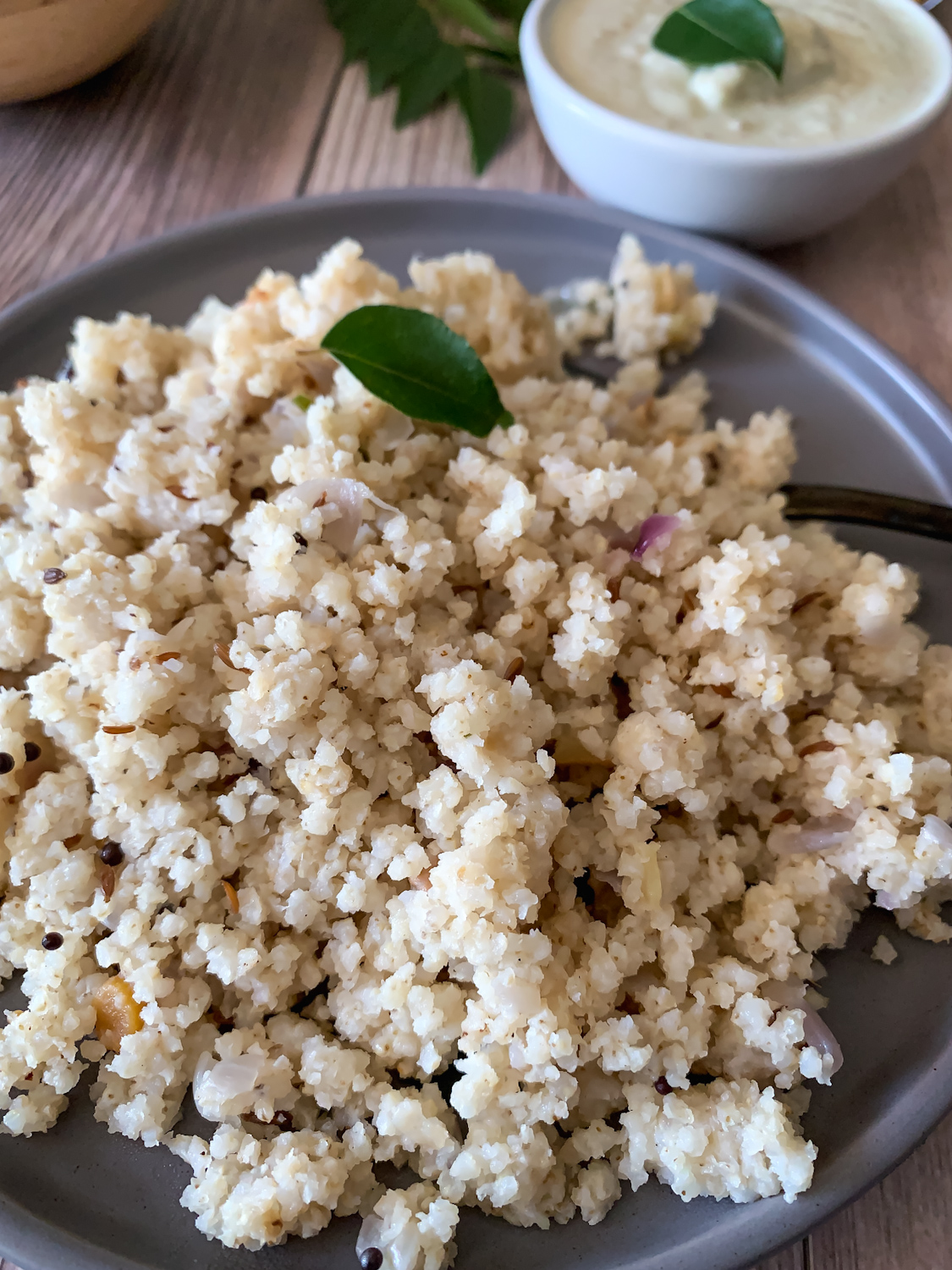
Traditionally made with semolina, upma is generally eaten as breakfast, paired with coconut chutney and sambar. In this rendition, the semolina has been swapped for little millet, a minor millet that is grown on less fertile soils, typically with crops like legumes and sesame. This little millet upma makes for a healthy and filling breakfast recipe and comes together in just 30 minutes.
| Little millet | 1 cup |
|---|---|
| Oil | 1 tablespoon |
| Split chickpea lentils (chana dal) | 1 teaspoon |
| Cumin seeds | 1 teaspoon |
| Mustard seeds | 1½ teaspoon |
| Chopped cashew nuts | 1 teaspoon |
| Curry leaves | 4-5 |
| Green chilies, chopped | 1 teaspoon |
| Ginger, finely chopped | 1 teaspoon |
| Small onion, finely chopped | 1½ cup |
| Salt | 1 teaspoon |
| Hot water | 2 cups |
| Ghee | 1 tablespoon |
What You Will Need
A wok or a pan with a lid, and mixing spoons.
Instructions
Place the millet in a bowl and wash two to three times, or until the water runs clear. Drain and set aside.
Heat the oil in a heavy-bottomed wok on medium to high heat. Add the lentils, cumin seeds, mustard seeds, and cashew nuts and fry until the lentils are golden brown and the mustard seeds start to sputter.
Now add the chopped chili, ginger, and onion and continue frying for two minutes or until the onions become translucent.

Add the millet, and continue cooking for another minute, allowing the oil and the spices to coat the grains.

Add the salt and hot water, and bring to a boil. Taste to check whether it is adequately salted; add more if required.
Cover, and let the upma cook on a low flame for around 12-15 minutes. After the 10-minute mark take the lid off and check to see if more water is needed. If so, add two to three tablespoons of water. Place the lid back on and continue cooking until the millets are cooked through. They should appear fluffy, and be soft to the touch.
Add one tablespoon of ghee, and fluff the upma by gently mixing it. Take the wok off the heat. Cover again and let the upma rest for five minutes before serving.

Tips and Variations
Add chopped vegetables, such as carrot, peas, and french beans to the upma to give it a pop of colour and texture.
You can also add seasonal broad beans available in your local market, such as avarekai (hyacinth beans) in Karnataka or val (broad bean) in Maharashtra and Gujarat.
This upma can also be made with barnyard millet.
Padma is an early-years education entrepreneur and the enthusiastic food blogger behind MyGoodFoodWorld. She divides her time between Manchester in England and Chennai, Tamil Nadu.

This recipe is part of the Millet Revival Project 2023, The Locavore’s modest attempt to demystify cooking with millets, and learn the impact that it has on our ecology. This initiative, in association with Rainmatter Foundation, aims to facilitate the gradual incorporation of millets into our diets, as well as create a space for meaningful conversation and engagement so that we can tap into the resilience of millets while also rediscovering its taste.

Rainmatter Foundation is a non-profit organisation that supports organisations and projects for climate action, a healthier environment, and livelihoods associated with them. The foundation and The Locavore have co-created this Millet Revival Project for a millet-climate outreach campaign for urban consumers. To learn more about the foundation and the other organisations they support, click here.
You must be logged in to rate this recipe.

Sign in with email

